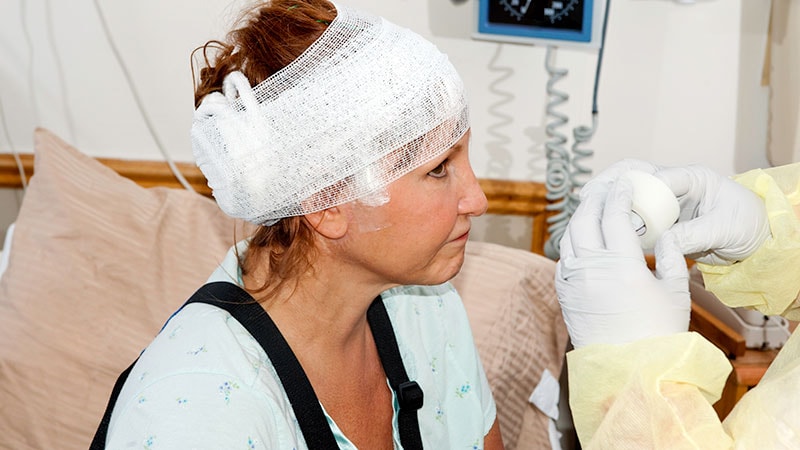Traumatic brain injury (TBI) may have long-term, sex-specific effects on brain structure, with women showing greater vulnerability to brain volume loss later in life.
In a community-based cohort of older adults, TBI was linked to reduced volumes in the hippocampus, frontal gray matter, and total cerebral gray matter on MRI in women — but not in men.
Sex may predict different risk for later life atrophy after TBI, particularly in brain regions commonly affected in Alzheimer’s disease (AD) and related dementias, the investigators noted.
Lead investigator Chad Farris, MD, PhD, of the Alzheimer’s Disease Research Center, Boston University, Boston, told Medscape Medical News the reason brain volume loss after TBI appears in women but not in men remains unclear, but it is a key focus of ongoing research.
“Looking at which factors may be playing a role in this difference is critical as a next step for understanding how to potentially prevent this apparent volume loss in women after TBI,” Farris said.
The study was presented on July 29 at the Alzheimer’s Association International Conference (AAIC) 2025.
Women More Vulnerable?
TBI is a known risk factor for later cognitive decline and dementia. MRI-detected reductions in brain volumes after TBI have been observed but few studies have dissected differences that may exist between the sexes.
To address this research gap, investigators drew on the Framingham Heart Study generation 2 cohort (1971-1975). They identified 159 adults (mean age, 68 years; 50% women) with a history of TBI (141 mild; 18 moderate-to-severe) and matched each to four control individuals without TBI (n = 636) by birth year and sex.
All participants underwent MRI between 2005 and 2008. MRI volumetric analysis produced total and regional brain volumes, and regression models adjusted for total intracranial volume, education, APOE ε4 status, age at scan and time since injury. Sex-stratified analyses were performed.
The average time from TBI to MRI approached 12 years.
Participants with TBI had significantly smaller hippocampal volumes than TBI-free control individuals (β= -0.15; P = .004) and there was a nonsignificant trend toward smaller frontal gray matter volume (β = -1.66; P = .056).
In women, but not men, TBI was significantly associated with smaller hippocampal (β = -0.25; P < .0001), frontal gray matter (β = -2.67; P =.007), and total cerebral gray matter (β = -5.20; P = .030) volumes.
Replication Needed
“An initial next step is confirming these findings from our cross-sectional study in a longitudinal study of brain volumes in women and men with and without TBI,” said Farris.
“The key question is how do brain volumes of women and men differ longitudinally over time after TBI relative to women and men without TBI,” he added.
Farris said this type of research is important for understanding AD heterogeneity, with the goal of a personalized medicine approach to risk and management.
For clinicians seeing aging patients who have concerns about cognition, “our findings could suggest that their bar for referral to an AD specialist might be lower in a woman with a past TBI,” Farris said.
Farris suggested that women with a history of TBI who are concerned about their long-term cognitive health, should follow the principles espoused for good cognitive aging, “including aerobic exercise, being socially and intellectually engaged, and following a heart healthy/Mediterranean diet.”
Reached for comment, Courtney Kloske, PhD, director of Scientific Engagement, the Alzheimer’s Association, said this is “an interesting study, potentially highlighting sex differences in the way the brain may respond to injury, with increased shrinkage in areas of the brain impacted in Alzheimer’s in women with a history of TBI.”
Kloske said this finding has potential clinical implications for follow-up after TBI, “but we need more research to really understand the mechanism behind the sex differences. There could be a lot of different things that are happening that’s different in females vs males, and this study is just highlighting that this is a really complicated story.”
Kloske also noted that TBI is one of those “more modifiable” risk factors for dementia. “For example, when we think about wearing a helmet when you’re riding a bike or when you are driving a car, wearing your seatbelt to protect your head in those potential situations of a bike or car accident.”
This study had no commercial funding. Farris and Kloske had no relevant disclosures.
